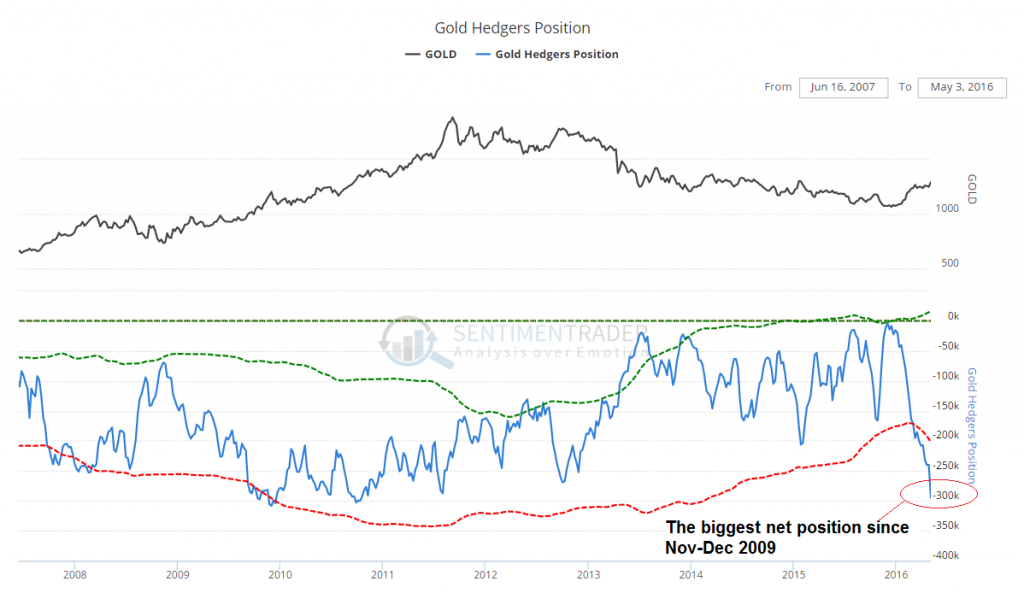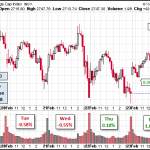Commercial and Non-Commercial Market Participants
The commitments of traders in gold futures are beginning to look a bit concerning these days – we will explain further below why this is so. Some readers may well be wondering why an explanation is even needed. Isn’t it obvious? Superficially, it sure looks that way.

As the following chart of the net position of commercial hedgers illustrates, their position is currently at quite an extended level:

Net position of commercial hedgers in COMEX gold futures – i.e., the inverse of the total net speculative position. Similarly large net positions were only recorded in late 2009 and late 2010 – click to enlarge.
However, as we have stressed many times, the interpretation of this indicator is not as straightforward as many observers seem to assume. As an aside to this, the often made assertion that commercial hedgers represent the so-called “smart money” doesn’t make much sense. It would be much better to refer to them as “completely neutral market participants”.
Most commercial traders aren’t betting on market direction at all. This category of traders comprises producers, merchants, processors, users and bullion banks, including arbitrageurs such as swap dealers. They are either hedging a physical inventory, future physical production or deliveries, or offsetting financial positions, including producer forward sales in which they act as intermediaries, carry trades and other arbitrage activities.
Carry trades often involve physical inventory, but even a calendar spread in futures contracts alone can be seen as a variation of a carry trade. In gold’s case, carrying inventory can be an enticing proposition, especially in a ZIRP or near-ZIRP environment, as Keith Weiner reminds us every week in his update on gold basis spreads.
Trades that involve holding warehouse inventories offset by futures positions so as to capture the spread between spot and futures prices are in principle possible (and are indeed undertaken) in all sorts of commodities. Precious metals have the advantage though that their stocks are extremely large and that they don’t take up much space, so they invite a lot of arbitrage activity. Note that arbitrage is also an essential characteristic of open-ended ETFs backed by bullion such as GLD – which is why they don’t develop large premiums, resp. discounts to NAV.
A Holistic Approach
The only thing that matters about the commitments of traders are actually the activities of speculators. When their position becomes very lopsided – which is currently indeed the case – the market becomes at least vulnerable to a sizable short term correction. Speculators in futures as a rule follow strict technical and money management guidelines, thus there will always be layers of stops both below and above current market prices. These stops will exacerbate selling, resp. buying pressure when these levels are violated.











Leave A Comment